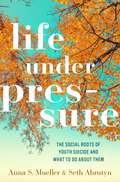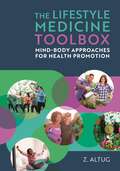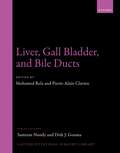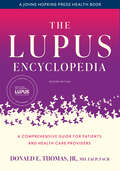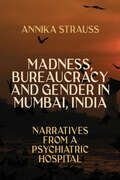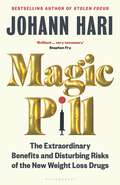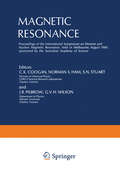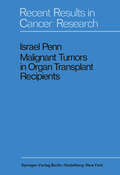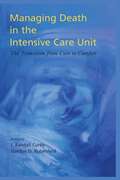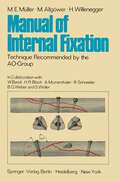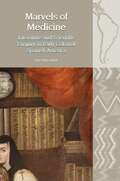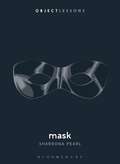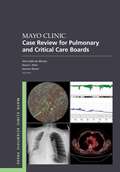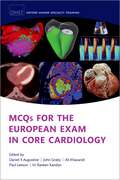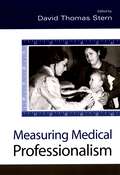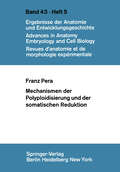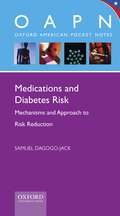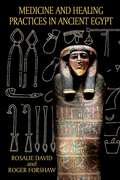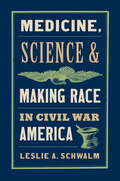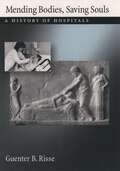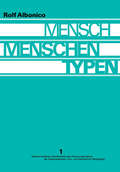- Table View
- List View
Life under Pressure: The Social Roots of Youth Suicide and What to Do About Them
by Anna S. Mueller Seth AbrutynA rare study that transforms our understanding of why youth die by suicide, why youth suicide clusters happen, and how to stop them Youth suicide clusters have deeply unsettled communities in recent years. While clusters have been widely documented in the media, too little is known about why youth die by suicide, why youth suicide clusters happen, and how to stop them both. In Life under Pressure, Anna S. Mueller and Seth Abrutyn investigate the social roots of youth suicide and why certain places weather disproportionate incidents of adolescent suicides and suicide clusters. Through close examination of kids' lives in a community repeatedly rocked by youth suicide clusters, Mueller and Abrutyn reveal how the social worlds that youth inhabit and the various messages they learn in those spaces--about who they are supposed to be, mental illness, and help-seeking--shape their feelings about themselves and in turn their risk of suicide. With great empathy, Mueller and Abrutyn also identify the moments when adults unintentionally fail kids by not talking to them about suicide, teaching them how to seek help, or helping them grieve. Through stories of survival, resilience, and even rebellion, Mueller and Abrutyn show how social environments can cause suicide and how they can be changed to help kids discover a life worth living. By revealing what it is like to live and die in one community, Life under Pressure offers tangible solutions to one of the twenty-first century's most tragic public health problems.
The Lifestyle Medicine Toolbox: Mind-Body Approaches for Health Promotion
by Ziya Altug, OCSThis holistic guide provides an integrative toolbox on how healthcare and fitness professionals can promote lifestyle medicine with their clients. Its clinical and evidence-informed approach focuses on the six primary lifestyle medicine factors: nutrition, exercise, sleep hygiene, stress management, risky substance use, and social connectedness. Each factor is enriched with a variety of strategies and advice including anti-inflammatory recipes, self-guided visualisation, tips on how to break bad habits, sustainable fitness, and mind-body exercises.Based on the author's 30+ years of experience as a trained physical therapist treating musculoskeletal conditions, this book's nonpharmacological and nonsurgical focus allows clients to feel empowered in taking charge of their health through a plethora of resources and techniques. It provides clear, actionable steps and real-world examples in order to nurture sustainable changes that promote long-term health and healing.
Liver, Gall Bladder, and Bile Ducts (Gastrointestinal Surgery Library)
Over the last two decades, there have been major advances in imaging, endoscopy, and laparoscopy in the field of gastrointestinal (GI) surgery. GI surgery is the newest sub-specialty branch of general surgery, where enhanced expertise and high-volume centres have made a difference to the outcomes of complex operations. Surgeons can now do difficult procedures with low morbidity and mortality rates, and greatly improved overall results. This volume provides detailed and up-to-date knowledge on diseases of the liver, gall bladder, and bile ducts. Split into two sections, it covers anatomy and physiology, approaches to specific conditions and traumas, a thorough analysis of current knowledge and future advances in the field, and a review of the relevant literature. Written and edited by world-renowned experts in the field, this book will be a valuable resource for hepatobiliary surgeons and trainees, general surgeons, researchers, and medical students.
The Lupus Encyclopedia: A Comprehensive Guide For Patients And Health Care Providers (A\johns Hopkins Press Health Book Ser.)
by Donald E. ThomasMadness, Bureaucracy and Gender in Mumbai, India: Narratives from a Psychiatric Hospital
by Annika StraussRegional mental hospitals in India are perceived as colonial artefacts in need of reformation. In the last two decades, there has been discussion around the maltreatment of patients, corruption and poor quality of mental health treatment in these institutions. This ethnography scrutinizes the management of madness in one of these asylum-like institutions in the context of national change and the global mental health movement. The author explores the assembling and impact of psychiatric, bureaucratic, gendered and queer narratives in and around the hospital. Finally, the author attempts to reconcile social anthropology and psychiatry by scrutinising their divergent approaches towards ‘mad narratives’.
Madness, Bureaucracy and Gender in Mumbai, India: Narratives from a Psychiatric Hospital
by Annika StraussRegional mental hospitals in India are perceived as colonial artefacts in need of reformation. In the last two decades, there has been discussion around the maltreatment of patients, corruption and poor quality of mental health treatment in these institutions. This ethnography scrutinizes the management of madness in one of these asylum-like institutions in the context of national change and the global mental health movement. The author explores the assembling and impact of psychiatric, bureaucratic, gendered and queer narratives in and around the hospital. Finally, the author attempts to reconcile social anthropology and psychiatry by scrutinising their divergent approaches towards ‘mad narratives’.
Magic Pill: The Extraordinary Benefits and Disturbing Risks of the New Weight Loss Drugs
by Johann HariThe bestselling author of Lost Connections and Stolen Focus takes a revelatory look at the new drugs transforming weight loss as we know it – sharing his personal experience on Ozempic and examining our ability to heal society's dysfunctional relationship with food, weight and our bodies. In January 2023, Johann Hari started to inject himself once a week with Ozempic, one of the new drugs that produces significant weight loss. He wasn't alone – some predictions suggest that in a few years, one in four of the British population will be taking these drugs. While around 80 per cent of diets fail, someone taking one of the new drugs is likely to lose up to a quarter of their body weight in six months. To the drugs' defenders, this is a moment of liberation from a condition that massively increases your chances of diabetes, cancer and an early death. Still, Hari was wildly conflicted. Can these drugs really be as good as they sound? Are they a magic solution – or a magical illusion? Finding the answer to this high-stakes question led him on a journey from Iceland to Minneapolis to Tokyo, and to interview the leading experts in the world on these issues. He found that along with the drugs' massive benefits come twelve significant potential risks. He also learned that these drugs radically challenge what we think we know about shame, willpower and healing. These drugs are about to change our world, for better and for worse. Everybody needs to understand how they work – scientifically, emotionally and culturally. Magic Pill is an essential guide to the revolution that has already begun – and which one leading expert argues could be as transformative as the invention of the smartphone.
Magnetic Resonance: Proceedings of the International Symposium on Electron and Nuclear Magnetic Resonance, held in Melbourne, August 1969, sponsored by the Australian Academy of Science
by C. K. CooganTWENTY-FIVE years ago in Russia, Zavoisky made the first experimen tal observation of electron spin resonances; and a year later Purcell, Torrey and Pound at Harvard and Bloch, Hansen and Packard at Stanford ('The Harvard of the West') observed nuclear magnetic resonances for the first time. In both cases (ESR and NMR) the phenomena had been previously predicted, and Gorter - surely one of the most unlucky experimenters of our time - had made his noble attempts to detect magnetic resonances. Purcell et aZ. , having beaten their radar swords into scientific ploughshares, used a re 3 sonant coaxial cavity, filled the inductive part with 850 cm of paraffin, and produced a resonance with a signal-to-noise ratio of 20. They predicted that the sensitivity could be increased several hundred-fold and foresaw applications in determining magnetic mo ments, investigating spin-lattice coupling and measuring magnetic fields. Their letter reached the editor of Phys. Rev. on Christmas Eve 1945, and the basis of NMR in the solid state was laid. Bloch et aZ. , fortunately working independently, established the entirely different, crossed-coil approach to the observation of NMR in a water sample, which they doped with paramagnetic ions to reduce the relaxation times. They had laid the foundation of liquid-state NMR. Their letter to Phys. Rev. was received on 29 January 1946.
Malignant Tumors in Organ Transplant Recipients (Recent Results in Cancer Research #35)
by Israel PennThere is a great deal of experimental work leading to the conclusion that immuno suppression of any kind increases susceptibility to clinical or viral carcinogenesis. Human epidemiology had already given some intimation of the abnormally high incidence of neoplasms in persons suffering from immunologic insufficiency. The first statistics on the incidence of cancer in organ transplant recipients tend to support this thesis. Transplantation can favor metastasis in a recipient who already has a malignancy; similarly, it can encourage the development of tumor cells which may be present in an organ transplanted from a cancerous donor; and finally, the frequency of lymphomas and carcinomas is higher in transplant recipients than in the general population. Immunodepression induced to facilitate tolerance clearly falls under suspicion on the basis of the experimental and clinical findings mentioned above. Anti-lymphocyte serum is not the only suspect-tumors have also occurred in patients treated with prednisone and Imuran alone. Now comes Dr. PENN'S monograph with a detailed account of these phenomena, together with an analysis and discussion. Clearly, induced carcinogenesis in man must be taken seriously. Not only must every precaution be taken in the screening of donor and recipient and the choice of immunosuppressive therapy in order to reduce it to the minimum, there is also the question whether the long-term immunosuppressive treatments inflicted upon patients in whom an auto-immune mechanism is thought to be the cause of the disease-treat ments whose efficacy is even more questionable than the mechanism-might not themselves be contributing to malignancy.
Managing Death In The Icu: The Transition From Cure To Comfort
by J. Randall Curtis Gordon D. RubenfeldManual of Internal Fixation: Technique Recommended by the AO-Group Swiss Association for the Study of Internal Fixation: ASIF
by M. E. Müller M. Allgöwer H. WilleneggerThe German edition of our book entitled "Operative Frakturen behandlung" by M. E. MÜLLER, M. ALLGÖWER and H. WILLENEGGER (Springer, Berlin . Göttingen . Heidelberg, 1963) has been out of print now for more than three years. We are planning a new edition which will deal with the collective experience of 14,000 new cases, all treated by internal fixation, and will include the newest developments in the field of internal fixa tion. However, it will be some time before this new edition can be published. Increasing demands for a description of the AO technique of internal fixation has stimulated us to publish this manual. In it we shall describe in a comprehensive but somewhat apodictic mann er the principles and techniques of the AO methods of fracture treatment and reconstructive surgery, which in our hands, have stood the test of time. The book is written in a somewhat abbreviated style. It cor responds in subject matter to the teaching given at the AO courses in Davos, but deals with each subject more thoroughly. We have dispensed with pictures of the instruments, as these may be found in the Synthes Catalogue *. This manual should be regarded as the product of collective experiencc, containing new thoughts and new discoveries from basic research. In considering the risks of mistakes and dangers, we can only reiterate what we have already stated in "Technique of Internal Fixation of Fractures": "Open treatment of fractures is a valuable but difficult method which involves much responsibility.
Marvels of Medicine: Literature and Scientific Enquiry in Early Colonial Spanish America (Liverpool Latin American Studies #21)
by Yarí Pérez MarínMarvels of Medicine makes a compelling case for including sixteenth century medical and surgical writing in the critical frameworks we now use to think about a genealogy of cultural expression in Latin America. Focusing on a small group of practitioners who differed in their levels of training, but who shared the common experience of having left Spain to join colonial societies in the making, this book analyses the paths their texts charted to attitudes and political positions that would come to characterize a criollo mode of enunciation. Unlike the accounts of first explorers, which sought to amaze audiences back in Europe with descriptions of strange and astonishing lands, these texts instead engaged the marvellous in an effort to supersede it, stressing the value of sensorial experience and of verifying information through repetition and demonstration. Vernacular medical writing became an unlikely early platform for a new form of regionally anchored discourse that demanded participation in a global intellectual conversation, yet found itself increasingly relegated to the margins. In responding to that challenge, anatomical treatises, natural histories and surgical manuals exceeded the bounds set by earlier templates becoming rich, hybrid narratives that were as concerned with science as with portraying the lives and sensibilities of women and men in early colonial Mexico.
Mask (Object Lessons)
by Dr. Sharrona PearlObject Lessons is a series of short, beautifully designed books about the hidden lives of ordinary things.From the theater mask and masquerade to the masked criminal and the rise of facial recognition software, masks have long performed as an instrument for the protection and concealment of identity. Even as they conceal and protect, masks – as faces – are an extension of the self. At the same time, they are a part of material culture: what are masks made of? What traces do they leave behind? Acknowledging that that mask-wearing has become increasingly weaponized and politicized, Sharrona Pearl looks at the politics of the mask, exploring how identity itself is read on this object.By exploring who we do (and do not) seek to protect through different forms of masking, Sharrona Pearl's long history of masks helps us to better understand what it is we value. Object Lessons is published in partnership with an essay series in The Atlantic.
Mayo Clinic Case Review for Pulmonary and Critical Care Boards (Mayo Clinic Scientific Press)
by Gallo De Moraes Diana Kelm Kannan RamarMayo Clinic Case Review for Pulmonary and Critical Care Boards is based on cases presented by faculty and fellows at the Mayo Clinic Pulmonary and Critical Care Medicine Wednesday Morning Case Conference, a weekly conference where interesting cases are presented in a "guess the diagnosis" format. The presenter leads the audience through the patient's clinical course highlighting clinically important facts and pearls in a question-and-answer format. The presentation concludes with take-home points relevant to clinical practice. Mayo Clinic is a tertiary-care referral medical center, which gives them the opportunity to see rare diseases or rare presentations of common diseases that don't present as frequently in other medical centers. Mayo Clinic Case Review for Pulmonary and Critical Care Boards is designed to be the optimal resource for board exam preparation in pulmonary and critical care medicine. Sections: ? Section I: Obstructive Lung Disease ? Section II: Critical Care Medicine ? Section III: Diffuse Parenchymal Lung Disease ? Section IV: Sleep Medicine, Neuromuscular and Skeletal ? Section V: Infections ? Section VI: Neoplasia ? Section VII: Pleural Diseases ? Section VIII: Interventional Pulmonology ? Section IX: Transplantation ? Section X: Vascular Diseases ? Section XI: Occupational and Environmental Diseases
MCQs for the European Exam in Core Cardiology (Oxford Higher Specialty Training)
by Daniel X Augustine John Graby Ali Khavandi Paul Leeson Sri Raveen KandanEverything you need to know to pass the European Exam in Core Cardiology (EECC) is in this book. Based on the bestselling MCQs for Cardiology Knowledge Based Assessment this new resource has been fully updated and refreshed to reflect the ESC core curriculum for cardiology. It contains over 700 multiple choice questions with detailed explanations and links to related ESC guidelines for further reading. Providing a thorough assessment of the reader's knowledge, each chapter has been carefully mapped to the curriculum allowing for focused revision. Written by a team of cardiology registrars and experienced consultants, this resource has been cleverly designed to give you hands-on experience of the level and type of questions you can expect in the exam, as well as high-quality, concise answers possible under time constraints. Complete and comprehensive, MCQs for the European Exam in Core Cardiology is the ideal companion for cardiology trainees preparing to sit this high-stakes exam, as well as a valuable reference for practising cardiologists.
Mechanismen der Polyploidisierung und der somatischen Reduktion (Advances in Anatomy, Embryology and Cell Biology #43/5)
by F. PeraMedicare and You 2011
by Department of Health Human ServicesThe official government handbook with important information about: new changes to Medicare; your Medicare benefits; choosing a health plan that's right for you; & your Medicare privacy rights.
Medications And Diabetes Risk: Mechanisms And Approach To Risk Reduction (Oxford American Pocket Notes Ser.)
by Samuel Dagogo-JackMedicine and Healing Practices in Ancient Egypt
by Rosalie David Roger ForshawMedicine and Healing Practices in Ancient Egypt provides a new perspective on healthcare and healing treatments in Egypt from the Predynastic to the Roman periods. Rather than concentrating exclusively on diseases and medical conditions as evidenced in ancient sources, it provides a ‘people-focused’ perspective, asking what it was like to be ill or disabled in this society? Who were the healers? To what extent did disease occurrence and treatment reflect individual social status? As well as geographical, environmental and dietary factors, which undoubtedly affected general health, some groups were prone to specific hazards. These are discussed in detail, including soldiers’ experience of trauma, wounds and exposure to epidemics; and conditions - blindness, sand pneumoconiosis, trauma and limb amputations – resulting from working conditions at building and other sites. Methods of diagnosis and treatment were derived from special concepts about disease and medical ethics. These are explored, as well as the individual contributions and professional interactions of various groups of healers and carers. Medical training and practice occurred in various locations, including temples and battlefields; these are described, as well as the treatments and equipment that were available. Ancient writers generally praised the Egyptian healers’ knowledge, expertise, and professional relationship with their patients. A brief comparison is drawn between this approach and those prevailing elsewhere in Mesopotamia, Greece and Rome. Finally, Egypt’s legacy, transmitted through Greek, Roman and Arabic sources, is confirmed as the source of some principles and practices still found in modern ‘Western’ medicine. Combining information from the latest studies on human remains and the authors’ biomedical research, this book brings the subject up to date, enabling a wide readership to access often scattered information in a fascinating synthesis.
Medicine and Healing Practices in Ancient Egypt
by Rosalie David Roger ForshawMedicine and Healing Practices in Ancient Egypt provides a new perspective on healthcare and healing treatments in Egypt from the Predynastic to the Roman periods. Rather than concentrating exclusively on diseases and medical conditions as evidenced in ancient sources, it provides a ‘people-focused’ perspective, asking what it was like to be ill or disabled in this society? Who were the healers? To what extent did disease occurrence and treatment reflect individual social status? As well as geographical, environmental and dietary factors, which undoubtedly affected general health, some groups were prone to specific hazards. These are discussed in detail, including soldiers’ experience of trauma, wounds and exposure to epidemics; and conditions - blindness, sand pneumoconiosis, trauma and limb amputations – resulting from working conditions at building and other sites. Methods of diagnosis and treatment were derived from special concepts about disease and medical ethics. These are explored, as well as the individual contributions and professional interactions of various groups of healers and carers. Medical training and practice occurred in various locations, including temples and battlefields; these are described, as well as the treatments and equipment that were available. Ancient writers generally praised the Egyptian healers’ knowledge, expertise, and professional relationship with their patients. A brief comparison is drawn between this approach and those prevailing elsewhere in Mesopotamia, Greece and Rome. Finally, Egypt’s legacy, transmitted through Greek, Roman and Arabic sources, is confirmed as the source of some principles and practices still found in modern ‘Western’ medicine. Combining information from the latest studies on human remains and the authors’ biomedical research, this book brings the subject up to date, enabling a wide readership to access often scattered information in a fascinating synthesis.
Medicine, Science, and Making Race in Civil War America
by Leslie A. SchwalmThis social and cultural history of Civil War medicine and science sheds important light on the question of why and how anti-Black racism survived the destruction of slavery. During the war, white Northerners promoted ideas about Black inferiority under the guise of medical and scientific authority. In particular, the Sanitary Commission and Army medical personnel conducted wartime research aimed at proving Black medical and biological inferiority. They not only subjected Black soldiers and refugees from slavery to substandard health care but also scrutinized them as objects of study. This mistreatment of Black soldiers and civilians extended after life to include dissection, dismemberment, and disposal of the Black war dead in unmarked or mass graves and medical waste pits. Simultaneously, white medical and scientific investigators enhanced their professional standing by establishing their authority on the science of racial difference and hierarchy. Drawing on archives of the U.S. Sanitary Commission, recollections of Civil War soldiers and medical workers, and testimonies from Black Americans, Leslie A. Schwalm exposes the racist ideas and practices that shaped wartime medicine and science. Painstakingly researched and accessibly written, this book helps readers understand the persistence of anti-Black racism and health disparities during and after the war.
